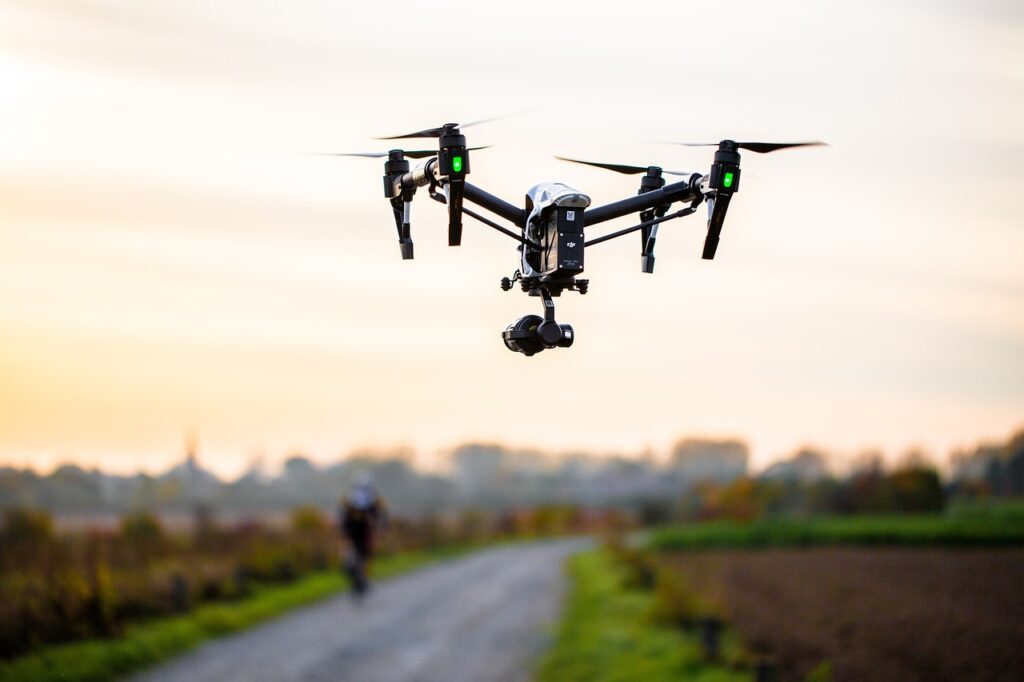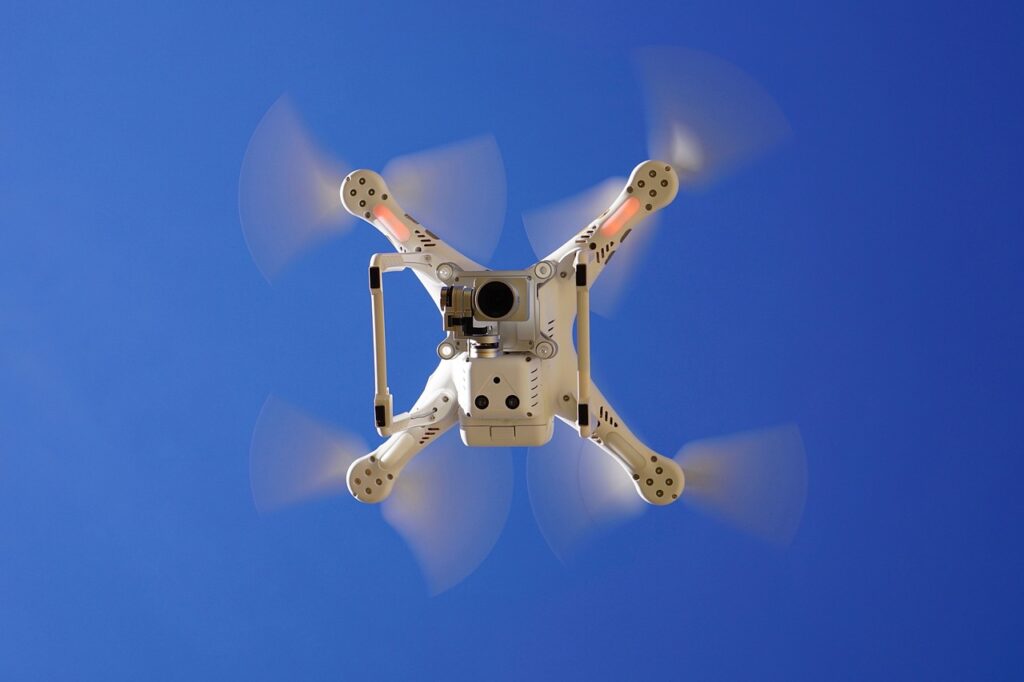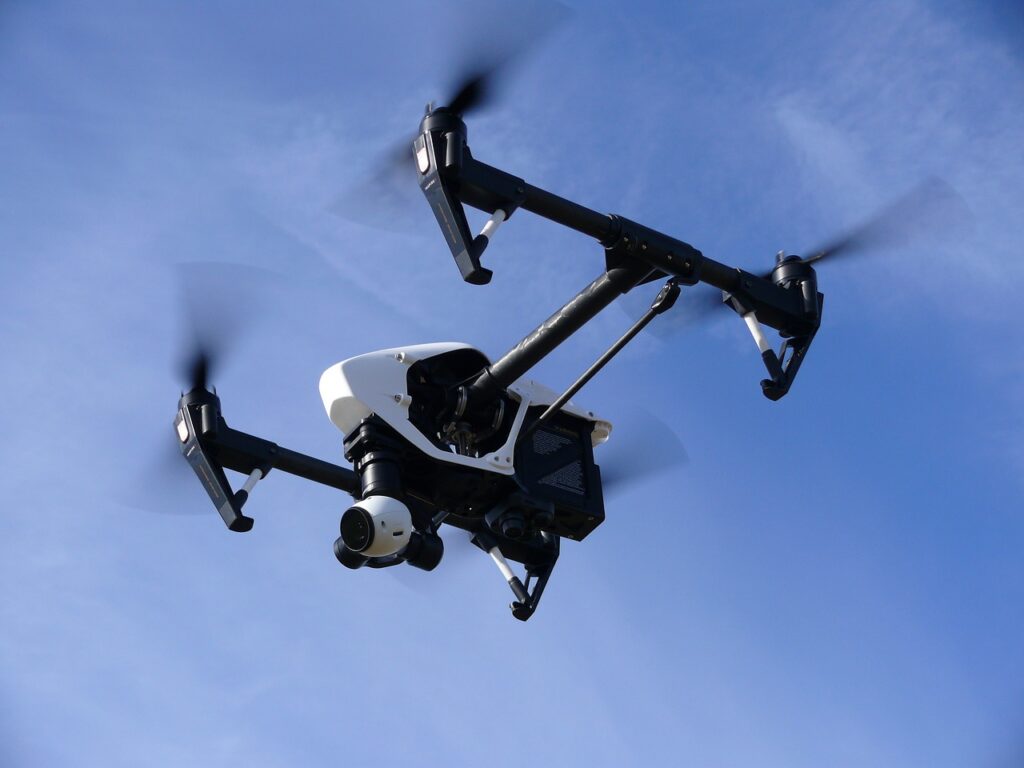o Have you ever wondered if it’s possible to fly a DJI drone in a blue zone? If you’re a drone enthusiast or simply curious about the rules and regulations surrounding drone flight, this article will provide you with answers. The blue zone, a term commonly used in aviation, refers to an area where drone operations are restricted due to security or safety concerns. Discover the intricacies of flying a DJI drone in a blue zone, and explore the potential limitations and permissions associated with this captivating world of aerial exploration. Get ready to soar into the details and unlock the fascinating possibilities that lie within.

Different drone restriction zones
Restricted Zones
Restricted zones are areas where drone flights are completely prohibited. These areas are typically high-security locations like military bases, government buildings, and airports. Flying a drone in a restricted zone is not only illegal but also poses a significant risk to public safety and national security.
Controlled Zones
Controlled zones are areas where drone flights are allowed but with certain restrictions and regulations in place. These zones often include urban areas, crowded spaces, and tourist attractions. Pilots flying drones in controlled zones must adhere to specific rules and guidelines, such as maintaining a safe distance from people and property.
Blue Zones
Blue zones refer to areas designated by aviation authorities where drone operations are regulated to ensure safety and mitigate potential risks. These zones are commonly identified by GPS coordinates and implemented through technology like geofencing. Blue zones have specific restrictions and limitations that drone operators need to be aware of and comply with to prevent accidents and uphold safety standards.
What is a blue zone?
Definition
A blue zone is a defined geographical area where the operation of drones is subject to specific regulations and restrictions put forth by aviation authorities. The purpose of establishing blue zones is to ensure the safety of airspace, protect sensitive areas, and promote responsible drone use. These zones are crucial in managing the increasing number of drones to prevent accidents and maintain a harmonious coexistence with other airspace users.
Purpose
The primary purpose of blue zones is to prevent unauthorized and reckless drone operations that can endanger people, property, and other aircraft. By implementing regulations within these zones, aviation authorities can control and manage the movement of drones in areas with potential safety concerns or sensitive operations. Blue zones also help prevent privacy violations and unwanted intrusions in certain locations.
Restriction Level
The restriction level within a blue zone varies depending on the specific regulations imposed by aviation authorities. Some blue zones may have a more relaxed restriction level, allowing drone flights with certain limitations, while others may have stricter rules, prohibiting all drone operations without prior authorization. It is essential to research and understand the restriction level of a blue zone before planning a drone flight to ensure compliance and avoid penalties.
DJI drones and blue zones
A Look into DJI drone GPS technology
Speaking about DJI drones, one of the leading drone manufacturers, utilize advanced GPS technology to ensure accurate positioning and flight control. This technology allows DJI drones to identify and respond to the presence of blue zones, preventing flights into restricted or controlled airspace. By integrating this technology, DJI aims to enhance safety and promote responsible drone operations in accordance with global aviation regulations.
Zone identification
DJI drones equipped with GPS technology can identify blue zones by their defined GPS coordinates. When a drone approaches or enters a blue zone, the GPS system recognizes the restricted area and automatically restricts the drone’s flight in that region. This feature helps drone operators avoid accidentally flying into prohibited areas by providing real-time information and visual alerts on the drone’s display.
Safety features
DJI drones also incorporate additional safety features to ensure compliance with blue zone regulations. These features include altitude restrictions, which limit how high a drone can fly in specific areas, and geofencing technology, which creates virtual boundaries around sensitive locations. Geofencing enables drones to automatically avoid restricted zones, preventing potential conflicts and ensuring adherence to aviation regulations.
Understanding blue zone regulations
Local regulations
Blue zone regulations can vary depending on the specific jurisdiction and local authorities. It is essential for drone operators to familiarize themselves with the regulations imposed by the local aviation authority governing the blue zone they intend to fly in. These regulations may include flight time restrictions, airspace restrictions, and specific protocols for obtaining permission to fly in a blue zone.
Flight height restrictions
One of the common regulations within blue zones is the restriction on flight height. Aviation authorities often set maximum altitude limits to prevent drones from interfering with manned aircraft or violating airspace regulations. It is crucial for drone operators to be aware of these height restrictions within blue zones and adjust their flight plans accordingly to ensure compliance.
Proximity limitations
Blue zones may also have proximity limitations, requiring drone operators to maintain a safe distance from certain areas or objects. For example, flying drones near critical infrastructure, such as power plants or government installations, may be strictly prohibited. Understanding and respecting these proximity limitations is vital to avoid potentially hazardous situations and legal consequences.
No-fly zones
Certain blue zones may be designated as strict no-fly zones, where drone operations are completely prohibited, even with prior authorization. These areas typically include sensitive locations like prisons, nuclear facilities, or areas with ongoing emergency operations. It is important to thoroughly research and identify no-fly zones within blue zones to avoid violating regulations and putting public safety at risk.

Obtaining permission to fly in a blue zone
Contacting local authorities
To gain permission to fly in a blue zone, drone operators should contact the local aviation authority responsible for the specific blue zone they wish to operate in. It is recommended to initiate contact well in advance to allow ample time for processing the request and obtaining the necessary approvals. Local aviation authorities can provide guidance on the application process and any additional requirements for drone operations within the blue zone.
Applying for permits
In some cases, drone operators may need to submit a formal application for permission to fly in a blue zone. The application process typically involves providing details about the planned flight, such as purpose, location, date, and time, along with any necessary supporting documentation. The local aviation authority will review the application and determine whether to grant the permit based on compliance with blue zone regulations and the potential impact on safety and security.
Providing necessary documentation
When applying for permission to fly in a blue zone, drone operators may be required to provide certain documentation, such as proof of remote pilot certification, insurance coverage, and flight plans. It is crucial to gather and submit all the necessary documents accurately and promptly to avoid delays in the permit approval process. Complying with these requirements demonstrates a commitment to responsible drone operation and increases the likelihood of obtaining permission.
Tips for flying in a blue zone
Pre-flight planning
Before flying in a blue zone, thorough pre-flight planning is essential. This involves researching and understanding the specific regulations and requirements of the blue zone, including any restrictions on flight height, proximity limitations, and no-fly zones. It is also important to check for any temporary or updated restrictions that may be in place due to special events or ongoing operations. Proper planning ensures compliance and enhances overall safety.
Understanding weather conditions
Another crucial aspect of flying in a blue zone is being aware of the weather conditions. Unfavorable weather, such as strong winds, heavy rain, or fog, can significantly affect the stability and control of a drone. It is important to monitor weather forecasts and avoid flying in adverse conditions that may put the drone at risk or compromise its ability to react to potential hazards.
Maintaining visual line of sight
Maintaining visual line of sight with the drone is an essential safety practice, especially when operating in a blue zone. Being able to visually monitor the surroundings and potential obstacles ensures the drone operator can maneuver and respond appropriately to changing conditions or unexpected situations. By keeping the drone within sight at all times, the operator can effectively avoid collisions and protect the safety of people and property.

Consequences of flying in a blue zone without permission
Legal ramifications
Flying in a blue zone without obtaining the necessary permission and violating the established regulations can have legal consequences. Authorities can impose fines, penalties, and even criminal charges for unauthorized drone operations. These legal ramifications vary depending on the jurisdiction, severity of the violation, and potential impact on safety and security. It is crucial to respect blue zone regulations to avoid legal troubles and maintain a positive image for the drone community.
Safety risks
Operating a drone in a blue zone without permission also poses significant safety risks. Without proper authorization, drone operators may unknowingly fly in restricted airspace, increasing the chances of colliding with other aircraft, endangering people on the ground, or causing damage to critical infrastructure. By disregarding blue zone regulations, drone operators not only compromise their own safety but also put the safety of others at risk.
Educating drone operators about blue zones
Public awareness campaigns
Public awareness campaigns play a critical role in educating drone operators about the existence and importance of blue zones. Aviation authorities, drone associations, and manufacturers can collaborate to create informational materials, online resources, and social media campaigns to raise awareness about blue zones, their regulations, and the impact of responsible drone operation. By increasing awareness, drone operators can make informed decisions and understand the need to comply with blue zone regulations.
Training programs
Providing comprehensive training programs for drone operators is essential in ensuring a thorough understanding of blue zone regulations and safe operating practices. These programs can cover topics such as airspace regulations, flight planning, emergency procedures, and the legal aspects of drone operations. By investing in training, drone operators can enhance their skills, knowledge, and awareness, ultimately leading to safer and more responsible drone use within blue zones.
Geofencing technology
The integration of geofencing technology in drones has proven to be an effective tool in promoting compliance with blue zone regulations. Geofencing creates virtual boundaries around restricted areas, automatically preventing drones from entering these zones without authorization. Manufacturers like DJI have implemented geofencing capabilities in their drones to increase safety and ensure adherence to blue zone restrictions. By utilizing this technology, drones are able to autonomously avoid restricted airspace, preventing accidental violations and enhancing overall safety.
Benefits of blue zones
Preventing drone accidents
Implementing blue zones with appropriate regulations significantly reduces the risk of drone accidents. By restricting drone operations in sensitive areas or high-traffic airspace, the chances of collisions with manned aircraft or interference with critical operations are minimized.
Blue zones ensure that drone operators are aware of the potential risks and adhere to specific rules to prevent accidents and protect public safety.
Protecting sensitive areas
Blue zones are crucial in safeguarding sensitive areas such as government installations, private properties, and ecological reserves.
By establishing regulations and restrictions, these zones prevent unauthorized surveillance, protect privacy, and preserve the integrity of delicate ecosystems.
The implementation of blue zones allows for a balance between the advancement of drone technology and the protection of valuable assets and environments.
Promoting responsible use
Blue zones promote responsible drone use by imposing regulations that emphasize compliance, safety, and accountability.
By educating drone operators and establishing clear guidelines, blue zones encourage operators to conduct flights responsibly and respect the airspace rights of others.
This fosters a culture of responsible drone operation, ensuring that the benefits of drone technology can be enjoyed without compromising safety or privacy.
The future of blue zones
Expansion of blue zone concept
As the number of drones continues to increase, the concept of blue zones is likely to expand.
More areas, such as sports stadiums, concert venues, and crowded urban spaces, may be designated as blue zones to mitigate safety risks and improve overall airspace management.
The expansion of blue zones will help harmonize drone operations with other activities, ensuring the coexistence of drones and manned aircraft in a safe and orderly manner.
International standardization
The standardization of blue zone regulations and procedures on an international level is an ongoing area of focus. Aviation authorities worldwide are working towards establishing consistent guidelines and regulations to govern blue zones effectively. International collaboration and coordination will facilitate smoother operations for drone pilots across borders, ensuring compliance with regulations wherever they fly and reducing confusion or ambiguity in interpretation.
Improved drone technology
Advancements in drone technology will continue to contribute to the effectiveness and safety of blue zones. Drone manufacturers are constantly working on enhancing GPS systems, incorporating sensors, and refining geofencing capabilities to further improve the accuracy and reliability of blue zone enforcement. These advancements will enable drones to better identify restricted areas and automatically adjust flight paths, further reducing the risk of unauthorized drone operations and enhancing overall safety.
In conclusion, DJI drones and other drone operators must be aware of blue zones and adhere to the specific regulations and restrictions imposed within these areas. Understanding the purpose of blue zones, obtaining necessary permissions, and following safety guidelines are imperative for responsible drone operations. By promoting public awareness, investing in training programs, and utilizing technology like geofencing, the drone community can ensure the safe and responsible use of drones within blue zones. Blue zones play a vital role in preventing accidents, protecting sensitive areas, and promoting the harmonious integration of drones into our airspace. As the concept of blue zones evolves and becomes standardized globally, the future holds a safer and more regulated environment for drone operations.


